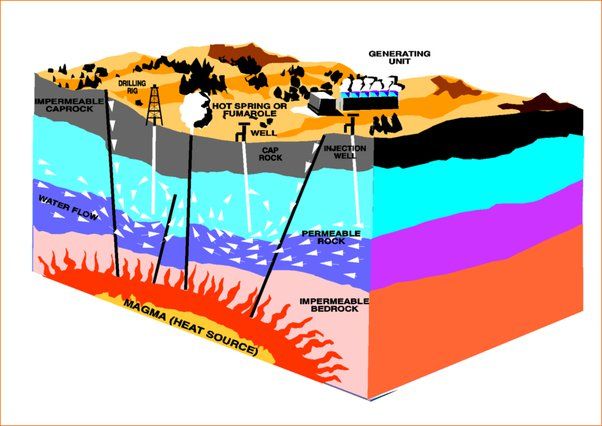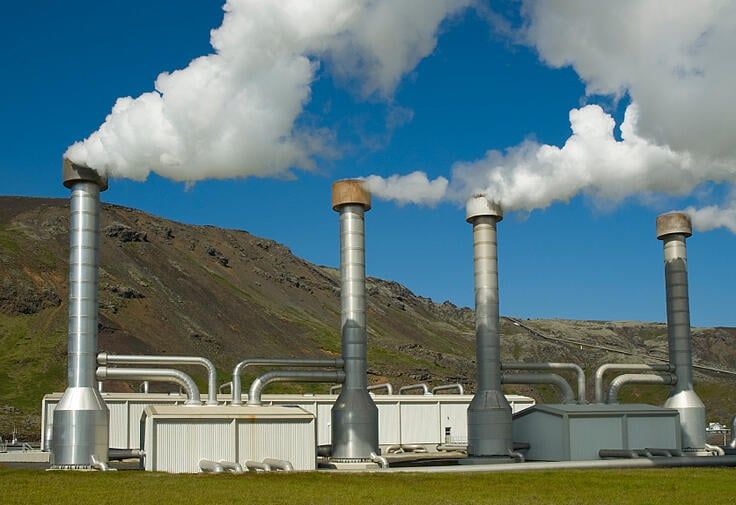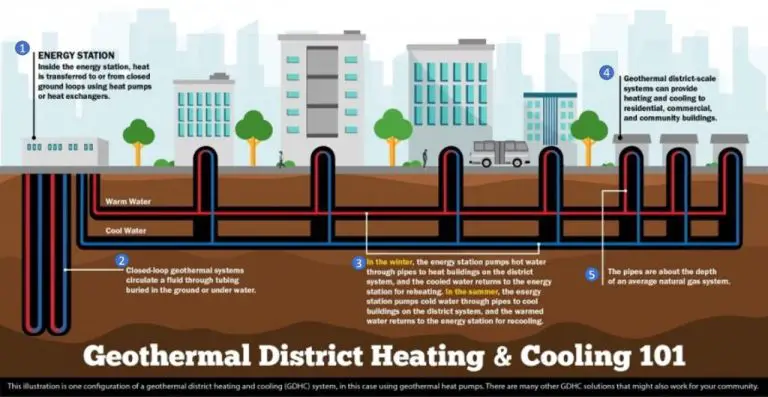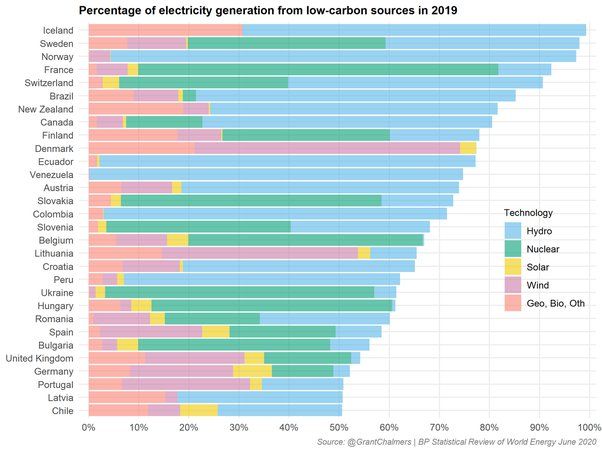Why Geothermal Energy Sources May Not Always Be Truly Sustainable?
Geothermal energy is a form of renewable energy derived from the heat stored beneath the Earth’s surface. It utilizes hot water or steam reservoirs found in underground hydrothermal systems to generate electricity or provide direct heat for buildings or industrial processes (ELI: Energy: Support Materials: Geothermal Energy Definition of Geothermal Energy). Geothermal power plants use wells to pump hot water or steam from these reservoirs to the surface. The steam rotates a turbine which activates a generator, converting the steam’s energy into electricity. The water is then returned back into the reservoir to be reheated (Geothermal Energy, MarineBio). This continuous process relies on constant replenishment of the heated water.
Geothermal Energy’s Sustainability Claims
Geothermal energy is often claimed to be a sustainable and renewable energy source. Proponents argue that because geothermal energy comes from the natural heat within the Earth, it can be harnessed indefinitely, unlike fossil fuels which will eventually run out (1). The geothermal energy available within the first 6 miles of the Earth’s crust is estimated to be 50,000 times the total global energy use in a year, indicating an enormous potential supply (2). Since the heat emanates naturally from the Earth’s core, geothermal is considered renewable and is expected to be available for billions of years.
Geothermal is also praised as a clean energy source. Unlike burning fossil fuels, geothermal does not directly produce greenhouse gas emissions or air pollutants. This aligns with sustainability goals to mitigate climate change and reduce environmental damage from energy production (3). Overall, geothermal energy is often claimed to be an abundant, renewable, and emission-free energy source that can support global energy needs in a sustainable manner for the long-term.
Geothermal Energy’s Limited Supply
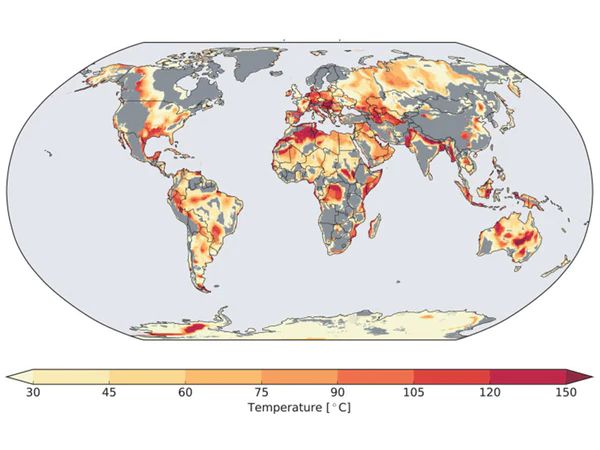
Geothermal energy is limited to certain geographic locations where heat from the Earth’s core reaches close enough to the surface to be accessible for power generation or heating. This requires areas like tectonic plate boundaries, hot spots caused by magma chambers, young volcanic regions, and certain sedimentary basins.1 While geothermal resources exist globally, only a small fraction have high enough temperatures within accessible drilling depth for energy production.2 This restricts large-scale geothermal energy to regions like Western North America, Iceland, New Zealand, Indonesia, the Philippines, and parts of Africa and South America. Overall, geothermal electricity potential only covers about 10-20% of Earth’s land surface.1 This geographic limitation is a major sustainability challenge, as it restricts how much geothermal energy can realistically contribute on a global scale.
Water Usage Concerns
One of the major environmental concerns surrounding geothermal energy is its high water usage. Geothermal power plants utilize large amounts of water for cooling and steam production. A typical geothermal plant can use over 20 million gallons of water per day, with estimates that geothermal energy uses about 1800-3600 gallons per MWh generated (https://www.the-pool.com/does-geothermal-energy-affect-the-environment/). This level of water consumption can strain local water resources, especially in arid regions where water supplies are already scarce.
Additionally, geothermal facilities produce wastewater that contains chemicals like boron, arsenic, mercury, and ammonia. This wastewater must be properly handled to avoid contaminating local water resources. Most geothermal plants reinject the wastewater deep underground, but this carries the risk of inducing seismic events and, in some cases, the wastewater has still managed to taint groundwater supplies (https://www.ozmo.io/can-geothermal-energy-cause-water-pollution/).
While geothermal can offer a sustainable energy source, its intensive water requirements in areas with scarce water resources raises questions about its long-term viability and impacts in drought-prone regions.
Land Subsidence Risks
One of the major environmental concerns with geothermal energy is the risk of land subsidence. Land subsidence refers to the gradual sinking or sudden collapse of land due to the withdrawal of subsurface fluids like water or steam from geothermal reservoirs (Ustun, 2012).
When geothermal fluids are extracted from the deep underground reservoirs, pore pressures are reduced in the geologic formations. This causes the granular skeleton of the reservoir to compact under the weight of the overlying rocks. Over time, this compaction can lead to gradual land subsidence at surface level (Cebecauerová, n.d.).
In some cases, rapid and substantial subsidence has occurred due to geothermal development, damaging infrastructure like roads, pipelines, and buildings. For example, extraction of geothermal fluids at the Wairakei field in New Zealand resulted in subsidence of around 6 feet over 50 years (Ustun, 2012).
Careful monitoring and management of geothermal reservoirs is necessary to reduce subsidence risks. This may involve limiting extraction rates, avoiding over-exploitation of reservoirs, and re-injecting geothermal fluids back underground after use (Cebecauerová, n.d.). Nonetheless, land subsidence remains an inherent environmental hazard of geothermal energy that must be accounted for.
Air and Water Pollution
Geothermal power plants can produce harmful pollutants that contaminate the air and water. The high heat and pressure involved in geothermal energy extraction brings natural contaminants to the surface that would otherwise remain underground. The main pollutants from geothermal plants are sulfur dioxide, silica emissions, and heavy metals.
Sulfur dioxide is a common air pollutant that can irritate the lungs and make breathing difficult. According to a study in Iceland https://grapevine.is/news/2012/08/06/air-pollution-has-immediate-effect-on-residents/, residents near geothermal plants experienced increased respiratory issues due to sulfur dioxide emissions. The geothermal fluids extracted contain hydrogen sulfide which gets converted into sulfur dioxide if exposed to air. Most geothermal plants use scrubber systems to remove sulfur compounds, but they are not always 100% effective.
Silica emissions are also a concern around geothermal plants. The high-velocity geothermal steam carries silica dust particles that can be hazardous to workers and nearby communities if inhaled. Proper ventilation and worker safety precautions are necessary to mitigate this risk.
Heavy metals like mercury, arsenic, and boron are often found in geothermal fluids as well. These metals can contaminate the air during venting procedures. They also get captured in wastewater that needs proper disposal. Insufficient wastewater disposal has led to heavy metal accumulation in nearby soil and water sources.
Induced Seismicity
One potential issue with geothermal energy projects is that they can sometimes cause minor earthquakes through a process known as induced seismicity. This occurs when the high-pressure injection of water into hot rock formations causes existing faults in the earth to slip, resulting in small tremors.[1]
While most induced seismic events are too small to be felt at the surface, larger magnitude quakes above 3 or 4 on the Richter scale have occurred at some geothermal sites. Two enhanced geothermal system (EGS) projects in Basel, Switzerland and St. Gallen, Switzerland were even suspended due to induced seismicity concerns.[2]
To mitigate the risks of induced seismicity, careful monitoring and management protocols need to be in place at geothermal sites. This includes using microseismic mapping to understand subsurface fracture systems and reinjection strategies to limit underground pressure buildup.
Reinjection Challenges
One of the major challenges with geothermal energy is reinjecting the wastewater produced during operations back underground. Geothermal plants pump hot water from deep wells to the surface to harness the heat energy. Once the water has circulated through the plant, it needs to be disposed of. The most common method is to reinject it into injection wells
Reinjecting the wastewater serves two purposes – it eliminates the need for surface disposal and helps maintain reservoir pressure. However, reinjecting large volumes of wastewater can be problematic. Several issues can arise:
Clogging of reinjection wells – The cooled geothermal water contains dissolved minerals that can precipitate and clog wells and reservoirs when reinjected, reducing permeability (Markó et al., 2021). This requires costly maintenance to maintain injection capacity.
Induced seismicity – Increasing pore pressures through reinjection can trigger seismic events by reactivating faults (Markó et al., 2020). Larger magnitude earthquakes have halted some geothermal projects.
Chemical reactions – Mixing the reinjected water with native groundwater can cause mineral precipitation and scaling due to different water chemistries (Markó et al., 2021). This can reduce reservoir permeability.
Reservoir overpressure – Excessive reinjection volumes and rates may overpressurize parts of the reservoir, limiting injection capacity (Markó et al., 2020). Careful reservoir management is required.
While reinjection is a standard practice, it requires careful planning and execution to avoid technical issues that can increase costs and limit production. Advanced modeling and monitoring of the subsurface is key to successful reinjection programs.
Financial Viability
Geothermal energy projects require substantial upfront investments, which can make them financially risky. Drilling geothermal wells thousands of feet into the earth is an expensive endeavor, with costs ranging from $1-13 million per well depending on the depth and location.
In addition to drilling, geothermal plants require infrastructure like pipelines, turbines, and power plants that add to the high capital costs. According to the National Renewable Energy Laboratory, a 50 MW geothermal power plant can cost $200-300 million to build.
The long payback period for recouping these investments, which can take 5-10 years, makes geothermal projects financially uncertain. As reported in The Economic Viability of Geothermal Energy in Electricity Generation, “the high upfront capital cost is one of the major limitations to extensive development of geothermal energy.”
Geothermal projects also carry risks like unsuccessful wells resulting in “dry holes”, reservoirs depleting over time, and fluctuations in electricity prices. This can make it difficult for geothermal developers to secure financing. Government incentives and policies that account for geothermal’s environmental benefits are often needed to improve the economic viability of projects.
Conclusion
In summary, while geothermal energy has several benefits that support sustainability goals, such as being a renewable resource and emitting little greenhouse gases, it also has some important limitations. The geothermal resource is finite, and sites can become depleted over decades of use. There are also concerns around high water usage, land subsidence, induced seismicity from reinjection, and financial viability of plants. Geothermal can be a good option for clean energy in some locations, but it is not a silver bullet solution, and its sustainability depends on careful management of sites over long time periods. Overall, the sustainability case for geothermal is mixed, and it faces challenges regarding water, land, seismic impacts, and costs that require further research and technological improvements to fully address.

